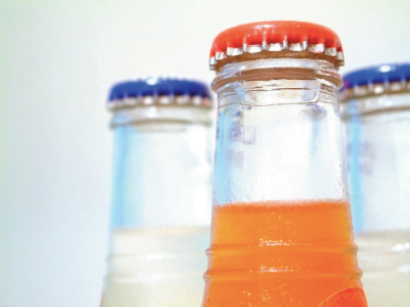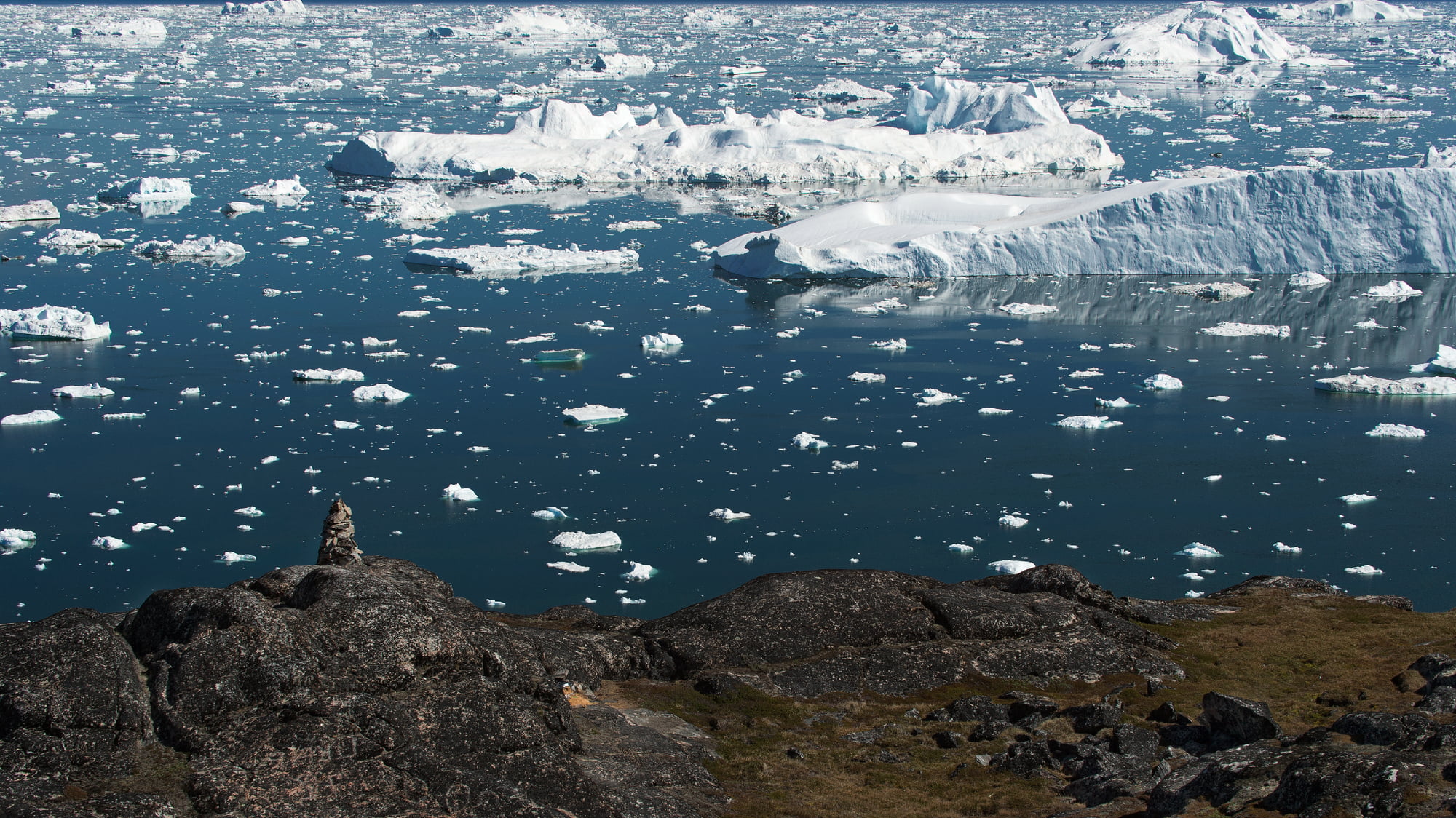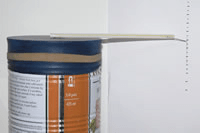Can you crumple a can?
Learn about air pressure
Equipment
◊ A hot plate, or electric hob
◊ An empty drinks can
◊ A shallow pan filled with cold water
◊ Tongs or oven gloves
Method
1. Put a spoonful of water in the can, and place it on the hotplate. Let it get hot.
2. Quickly, pick up the can using the tongs or oven gloves, and plunge it opening down in the water in the pan.
As the temperature of the can rises, it fills with water vapour. At this stage, the air inside the can is warmer than the surrounding air, but the pressure inside the can is the same as the surrounding air. When you put the hot can upside down in the pan of cold water, after a few moments, the can should crumple with a ‘pop’ sound. This is because, as the temperature inside the can falls and the water vapour condenses, the pressure inside the can becomes lower than the pressure of the surrounding air. If you had used something sturdier than an aluminium can, you would find that water would have time to flood into the container to equalize the pressure.
So how does this relate to atmosphere?
The large scale circulation of the atmosphere and oceans, and smaller scale weather systems, are all driven by pressure differences. Air, and water, will always tend to move from areas of high pressure to areas of lower pressure.
The pressure of the air above us at the surface of the Earth is usually about 1000mb – that’s 100,000Pa. That is the equivalent of 3 adult elephants on each square metre! At any one time the pressure at sea level may vary around the world from as little as 870mb (inside a hurricane) to 1083.8mb (recorded in Siberia, 31st December 1968).
In the UK, the air pressure varies between about 970-1040mb as weather systems pass over. Pressure also falls with height. This is why aeroplanes must have pressurized cabins. At the top of Mount Everest the pressure is only about 330mbar.
Where can I find more?
Find out more by reading chapter 6 of Bohren’s book “clouds in a glass of beer”.
Some more experiments
1. Get a plastic 1.5ltr lemonade bottle and drink the contents. Then immerse it up to the neck in hot water. Don’t let water get inside. Wait for a couple of minutes while the air inside warms up – this makes some of the air leave the bottle (a partial vacuum). Quickly replace the top and remove from the hot water. Soon the bottle will start to buckle as the air inside cools down and contracts, allowing the outside pressure to act on it. This works with plastic milk bottles too.
2. Use any plastic bottle and a ‘wine saver’ device (they extract the air from opened wine bottles to stop the rest spoiling). Pump out the air and watch the bottle collapse as flat as a pancake!
3. Put a ruler on the table, leaving a bit of it sticking out over the edge. Put a sheet of paper over the ruler, but not over the bit that’s sticking out. Now give a smart hit to the end of the ruler. You should find that it’s quite difficult to make the ruler move. Why? It’s because that sheet of paper has many kilos of air on it, so when you hit that ‘lever’ you’re trying to move much more than a sheet of paper!
4. Put a clean drinking straw in a clear cup of water. Hold a second clean straw next to the first, but with the end outside the cup, and try sucking through both straws at once. Can you suck water up? It is impossible to drink if one of the straws is outside the glass. In order for water to be forced into your mouse, the pressure outside (atmospheric pressure) needs to be greater than the pressure inside your mouth (a partial vacuum), but, with two straws, you suck air up as well and cannot maintain low pressure in your mouth. Now make a small hole with a pin in one of the straws, about 3cm from the top. Can you drink through it? No matter how hard you suck, a straw won’t work if air can get into your mouth and stop you from maintaining low pressure there.
5. Place a well-stretched balloon inside a 1 litre clear plastic bottle and spread its neck over the top of the bottle. Do the same with another bottle and balloon, but, this time, put a small hole in the side of the bottle, near its base. Can you blow up the balloons inside the bottles? It should only be possible with the holey bottle. Quickly put your thumb over the hole when the balloon is inflated, and it should stay inflated when you stop blowing into it. It should also be possible to inflate the balloon by sucking air through the hole in the bottle! Think about where the pressure is the same as, greater or less than atmospheric pressure.



